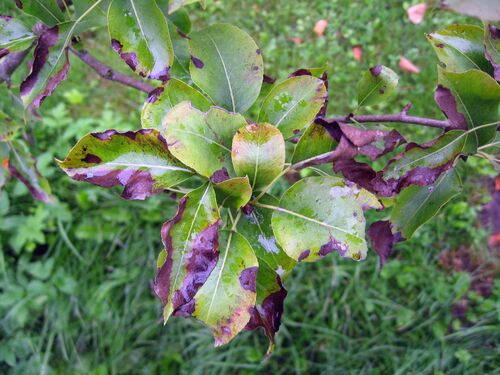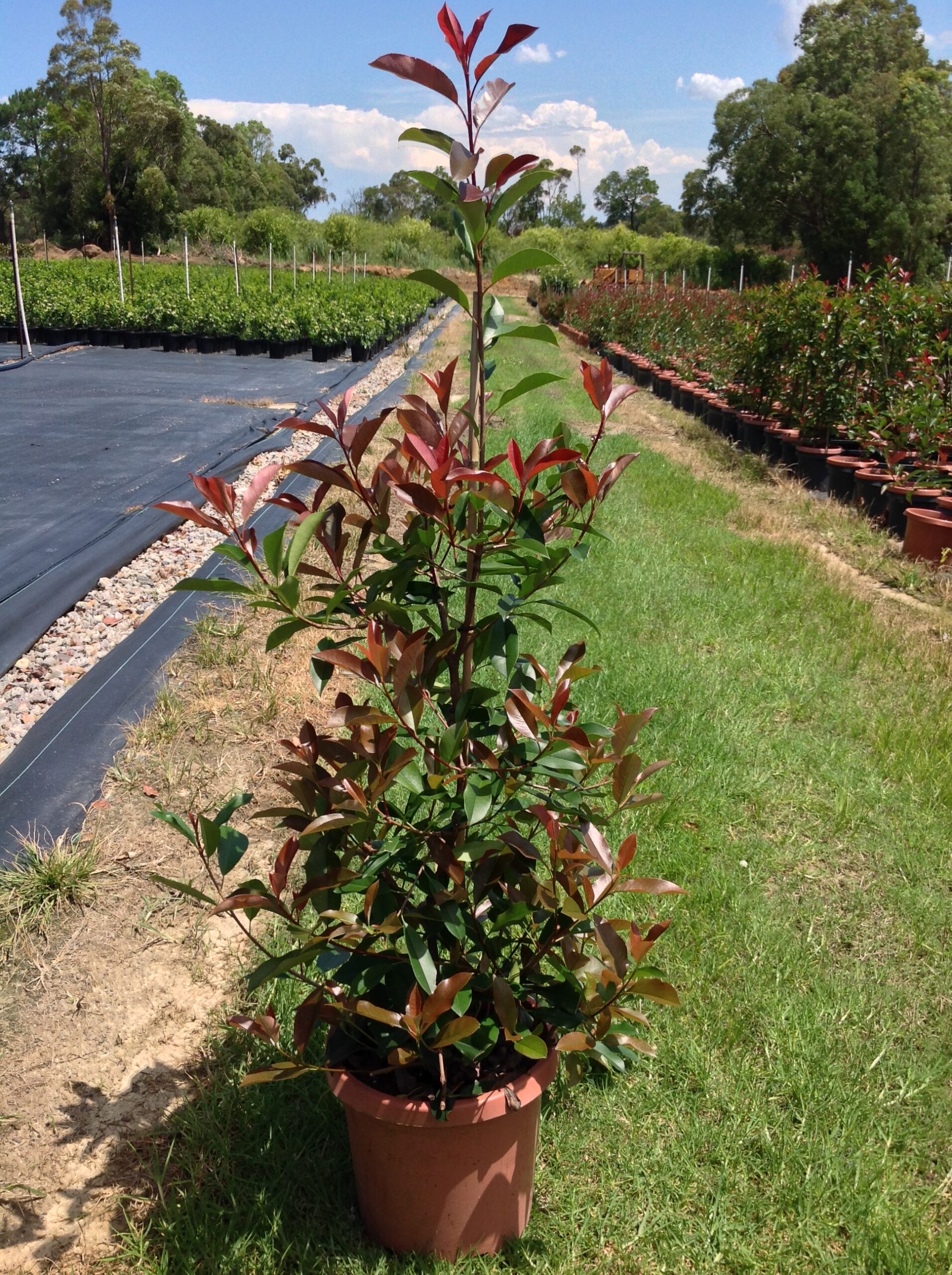What is Fire Blight and How Does it Affect Photinia Red Robin?
Fire blight, a bacterial disease caused by Erwinia amylovora, is a significant threat to photinia red robin plants. This disease can lead to devastating consequences if left untreated, including the death of entire plants. Fire blight affects photinia red robin by infecting its flowers, leaves, and stems, causing them to turn black and wither. The bacteria enter the plant through natural openings or wounds, and can be spread by rain, wind, or contaminated pruning tools. Early detection and prompt management are crucial to preventing the spread of fire blight and minimizing its impact on photinia red robin plants. Fire blight is one of the most common photinia red robin diseases, and understanding its causes and symptoms is essential for effective disease management. In fact, fire blight photinia red robin diseases are a major concern for gardeners and landscapers, as they can lead to significant losses if not properly managed. The consequences of fire blight infection can be severe, resulting in reduced plant growth, decreased plant quality, and increased susceptibility to other diseases. Therefore, it is essential to take proactive measures to prevent fire blight infection and to develop effective management strategies to mitigate its impact. By understanding the causes and symptoms of fire blight, gardeners and landscapers can take steps to protect their photinia red robin plants from this devastating disease, which is a common issue in fire blight photinia red robin diseases. Fire blight photinia red robin diseases can be prevented and managed with proper care and attention, ensuring the health and longevity of these beautiful plants.
Identifying Fire Blight Symptoms in Your Photinia Red Robin
Identifying fire blight symptoms in photinia red robin is crucial for early detection and prompt management of this devastating disease. Fire blight infection can manifest in various ways, including blighted flowers, leaves, and stems. Blighted flowers may appear wilted, shriveled, or discolored, while infected leaves may turn yellow or black, often accompanied by a sticky, sweet-tasting liquid. Stems may also become infected, leading to cankers or lesions that can girdle the plant, causing dieback or death. It’s essential to distinguish fire blight symptoms from other diseases that can affect photinia red robin, such as root rot, leaf spot, or powdery mildew. For instance, root rot typically causes yellowing or browning of leaves, while leaf spot is characterized by small, circular lesions on the leaves. By recognizing the unique symptoms of fire blight, gardeners and landscapers can take swift action to prevent its spread and minimize its impact on photinia red robin plants. Early detection and prompt management are critical in preventing the devastating consequences of fire blight photinia red robin diseases.
How to Prevent Fire Blight in Your Photinia Red Robin
Preventing fire blight infection is crucial to maintaining a healthy photinia red robin. Several practical measures can be taken to reduce the risk of fire blight photinia red robin diseases. Pruning is an essential step in preventing fire blight, as it helps to remove infected branches and promote air circulation. Sanitation is also critical, as bacteria can spread through contaminated pruning tools and equipment. Avoiding excessive watering is another key factor, as fire blight thrives in moist environments. Additionally, removing weeds and debris around the plant can help to reduce the risk of infection. Implementing these measures can significantly reduce the risk of fire blight infection and minimize the devastating consequences of fire blight photinia red robin diseases. By taking proactive steps to prevent fire blight, gardeners and landscapers can ensure the long-term health and vitality of their photinia red robin plants. Regular monitoring and prompt action can make all the difference in preventing the spread of fire blight and other diseases that can affect photinia red robin.
Other Common Diseases Affecting Photinia Red Robin
In addition to fire blight, photinia red robin is susceptible to several other diseases that can cause significant damage and reduce its aesthetic value. Root rot, a fungal disease, can cause photinia red robin roots to decay, leading to plant decline and death. Leaf spot, another common disease, is characterized by small, circular lesions on the leaves, which can cause defoliation and reduce plant growth. Powdery mildew, a fungal disease, can cause a white, powdery substance to form on the leaves, reducing photosynthesis and plant growth. Other diseases that can affect photinia red robin include leaf rust, canker, and botrytis. It’s essential to identify these diseases promptly and take action to manage them, as they can spread quickly and cause significant damage. By understanding the common diseases that affect photinia red robin, gardeners and landscapers can take proactive steps to prevent infection and maintain a healthy, thriving plant. Regular monitoring and prompt action can help to prevent the spread of fire blight photinia red robin diseases and other diseases that can affect photinia red robin.
Diagnosing Fire Blight and Other Diseases in Photinia Red Robin
Accurate diagnosis is crucial in managing fire blight and other diseases in photinia red robin. A combination of laboratory tests and visual inspections can help identify the disease and determine the best course of action. Visual inspections involve examining the plant for common signs of disease, such as blighted flowers, leaves, and stems, as well as any unusual growth patterns or discoloration. Laboratory tests, such as polymerase chain reaction (PCR) and enzyme-linked immunosorbent assay (ELISA), can confirm the presence of fire blight and other diseases. It’s essential to work with a qualified plant pathologist or horticulturist to ensure accurate diagnosis and effective disease management. Early diagnosis and prompt action can help prevent the spread of fire blight photinia red robin diseases and other diseases that can affect photinia red robin, reducing the risk of significant damage and plant loss. By understanding the diagnostic process, gardeners and landscapers can take proactive steps to protect their photinia red robin plants and maintain a healthy, thriving landscape.
Treating Fire Blight and Other Diseases in Photinia Red Robin
Treating fire blight and other diseases in photinia red robin requires a comprehensive approach that involves a combination of antibiotics, fungicides, and integrated pest management strategies. Antibiotics, such as streptomycin and oxytetracycline, can be effective in controlling fire blight, while fungicides, such as copper-based products, can help manage fungal diseases like root rot and leaf spot. Integrated pest management strategies, which involve a combination of cultural, biological, and chemical controls, can provide a more sustainable and long-term solution to disease management. For example, introducing beneficial insects, such as parasitic wasps, can help control pests that can spread disease. Additionally, practicing good sanitation, pruning infected areas, and avoiding excessive watering can help prevent the spread of disease. It’s essential to work with a qualified plant pathologist or horticulturist to develop a treatment plan that is tailored to the specific needs of the photinia red robin plant and the disease present. By taking a proactive and comprehensive approach to disease management, gardeners and landscapers can help prevent the spread of fire blight photinia red robin diseases and other diseases that can affect photinia red robin, reducing the risk of significant damage and plant loss.
Managing Fire Blight and Other Diseases in Photinia Red Robin Landscapes
Effective management of fire blight and other diseases in photinia red robin landscapes requires a multi-faceted approach that incorporates cultural practices, biological controls, and chemical controls. Cultural practices, such as pruning, sanitation, and proper watering, can help prevent the spread of disease. Biological controls, such as introducing beneficial insects or microorganisms, can help control pests and diseases. Chemical controls, such as applying antibiotics or fungicides, can be used to treat infected plants. It’s essential to develop a comprehensive management plan that takes into account the specific needs of the photinia red robin plants, the disease present, and the landscape as a whole. This may involve working with a qualified plant pathologist or horticulturist to develop a customized plan that addresses the unique challenges of the landscape. By taking a proactive and integrated approach to disease management, gardeners and landscapers can help prevent the spread of fire blight photinia red robin diseases and other diseases that can affect photinia red robin, reducing the risk of significant damage and plant loss. Regular monitoring and prompt action can help identify disease issues early, reducing the need for more drastic measures and promoting a healthy and thriving landscape.
Maintaining a Healthy Photinia Red Robin: Best Practices
Maintaining a healthy photinia red robin requires a combination of proper care, regular monitoring, and prompt disease management. By following best practices, gardeners and landscapers can help prevent the spread of fire blight photinia red robin diseases and other diseases that can affect photinia red robin. Regular watering, fertilization, and pruning can help promote healthy growth and development, while regular monitoring can help identify disease issues early. Prompt action can then be taken to treat infected plants and prevent the spread of disease. Additionally, maintaining good sanitation practices, such as removing infected plant material and disinfecting pruning tools, can help prevent the spread of disease. By taking a proactive and comprehensive approach to plant care, gardeners and landscapers can help promote a healthy and thriving photinia red robin. This includes being aware of the common signs of fire blight and other diseases, and taking prompt action to address any issues that arise. By following these best practices, gardeners and landscapers can help ensure the long-term health and success of their photinia red robin plants, and enjoy the many benefits they have to offer.






